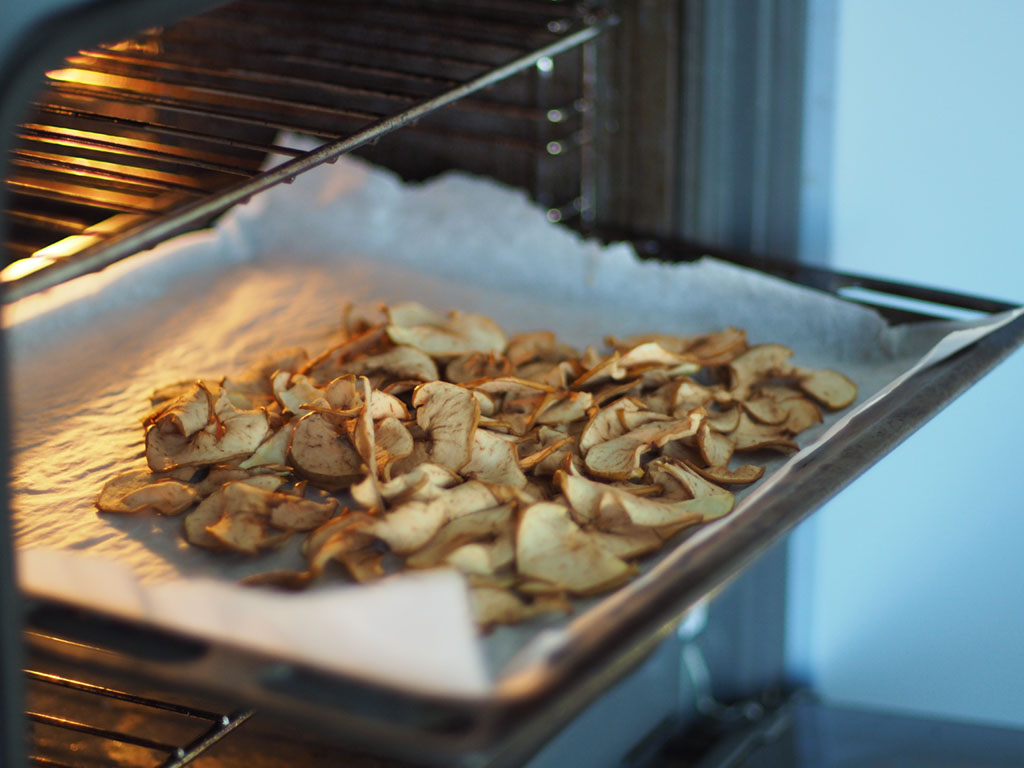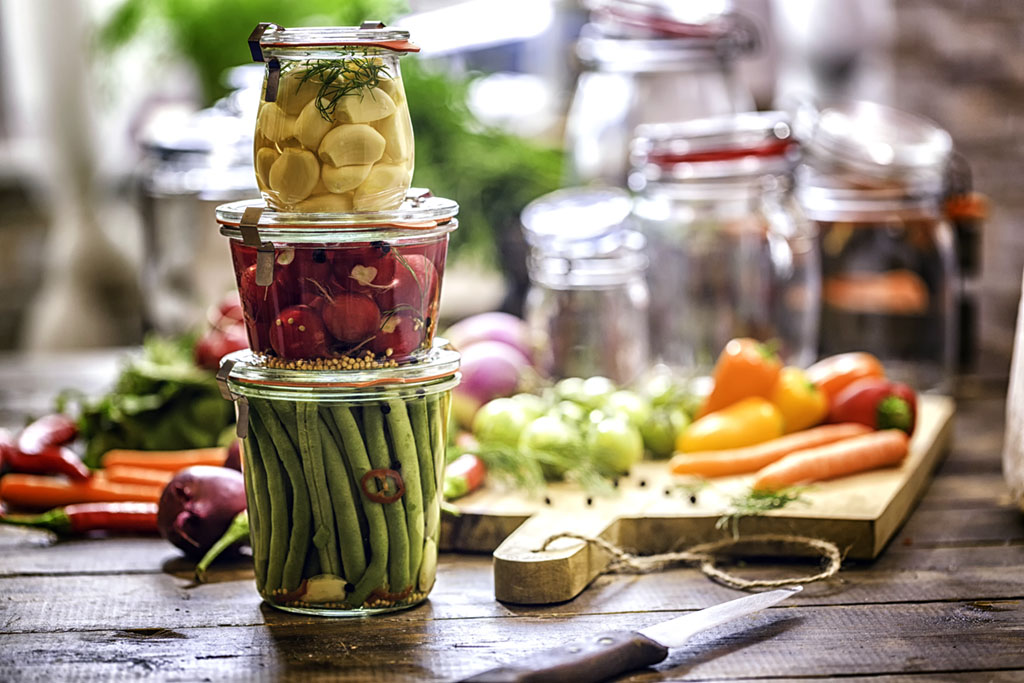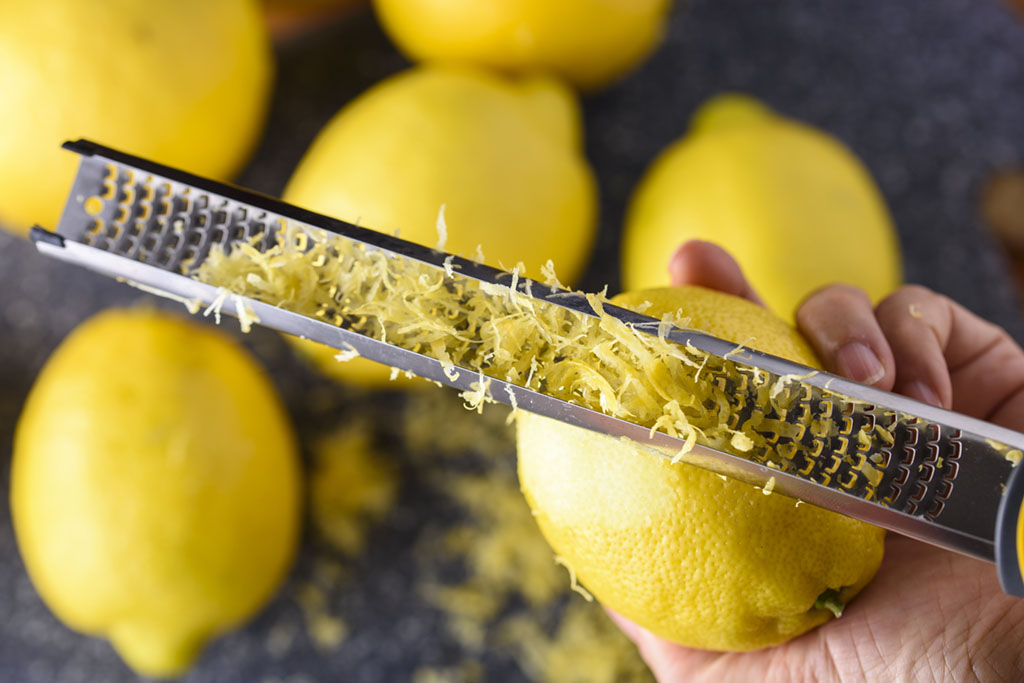
Delicious Ways to Repurpose Food Scraps
Food is a valuable resource that people don't often take full advantage of—especially food scraps. Composting food scraps can help your soil, but what about using food scraps to create more meals? Rinds, stems, and bones can be equally nutritious and delicious when repurposed into new dishes.
Use the ideas below to save money and elevate your cooking skills.
Roast for a snack

Are you constantly craving a salty or sweet snack to get you through the afternoon? Consider these tasty, inexpensive alternatives that can satisfy those cravings.
-
Apple peels
If you peel your apples, don’t toss the skins! Apple peels are rich in fiber and vitamins, and by rubbing a small amount of cinnamon sugar and butter over the peels and baking them until dark brown, you’ll have the perfect party or on-the-go sweet snack.
-
Potato peels
Wash the peels, and then add olive oil, salt, and any other toppings of your choice. Roast them in the oven, and let cool—voilà! Now you have a salty snack that is a cross between a french fry and a chip. The skins of potatoes are dense in vitamins, so you can feel guilt-free when you munch on them.
Boil into a broth

A wide variety of recipes use broth as a base or thickener. It's generally inexpensive to purchase, but you can create your own and tailor the flavor to your taste preference.
-
Bones and bone marrow
Turkey, ham, steak, and roast chicken are dinner staples. The meats themselves are delicious, but their bones and marrow are beneficial. And, while you can’t eat the bones whole, you can boil them to extract their nutrients, such as omega-3s, calcium, vitamin A, and iron. Then you can use this broth as a base for various soup recipes—or just drink the broth on its own to reap the benefits.
-
Herb stems
Let’s face it: it’s sometimes hard to know how much of an herb you’ll need for a recipe. If a recipe calls for a pinch of cilantro, you’re bound to purchase more than a pinch. Instead of tossing the excess herbs before they wilt, boil them into your favorite broth to enhance the flavor, or steam them on their own. Herbs like oregano have sinus-clearing oils that release when steamed and pressed—so you’ll have an aromatic essential oil you can apply to your skin (with caution) if allergies or illness strikes.
Pickle for later

If you love traditional, crunchy pickles, you’ll enjoy these pickled foods. You can pickle just about any food as a way of preserving and enhancing its flavors, but here are two options you may not have considered. Use these in sandwiches and salads or on their own as a snack.
-
Melon rinds
After eating a juicy slice of watermelon, don’t toss the rind. Pickled watermelon rinds make for a refreshing treat. Remove the green skins (if desired), and place them in your compost pile. Bring ginger and some of your favorite spices to a boil in a brine of water, vinegar, and salt to taste. Add the rinds, boil until soft, and jar them with the remaining liquid. Store them in the fridge for up to six months.
-
Vegetable stems
The parts of vegetables you might usually toss, such as broccoli stems, cauliflower cores, collard greens stems, kale stems, and the colorful ribs of swiss chard, are all great-tasting options for pickling. Rinse your leftover veggie scraps, then boil them in a brine of vinegar, water, and salt to taste. You may consider boiling them with leftover onion skins for added flavor. Jar them with the remaining liquid, and store them in the fridge for up to six months.
Garnish your dishes

Impress your loved ones by adding a few fancy garnishes to your favorite recipes.
-
Citrus peels
Use leftover citrus peels to add zest to your dishes, or curl them and place them on the rim of a drinking glass for a pop of color when entertaining. When you finish using them as a garnish, consider tossing the peels in the garbage disposal to give your kitchen a fresh, clean scent.
-
Carrot shavings
If you peel the outer skin off carrots, store them in the fridge to use on top of desserts like carrot cake, on salads, and in soups.
Feed them to your dog

Not everything is safe for dogs to eat, but these leftovers are safe and will have your dog wagging their tail in excitement.
-
Squishy strawberries
Sometimes, even when you try your best, you can’t eat your strawberries in time before they start to get soft. They are still safe to eat if they aren’t moldy, but they don’t have the same fresh, crisp texture. Luckily, dogs love strawberries, and they are a high-fiber treat you can serve to help your pooch’s digestive system. They also contain an enzyme that can help whiten your dog's teeth!
-
Banana tips
If you tend to avoid the tips and brown spots of a banana, you can combine and roll mashed banana, peanut butter, and oats into tasty dog treat balls. Freeze them for storage. Bananas are high in potassium and essential vitamins that can help your dog maintain a shiny, soft coat.
*Consult your vet before introducing new foods into your dog’s diet.

Posted in Start Healthy September 2021 on Jun 17, 2021